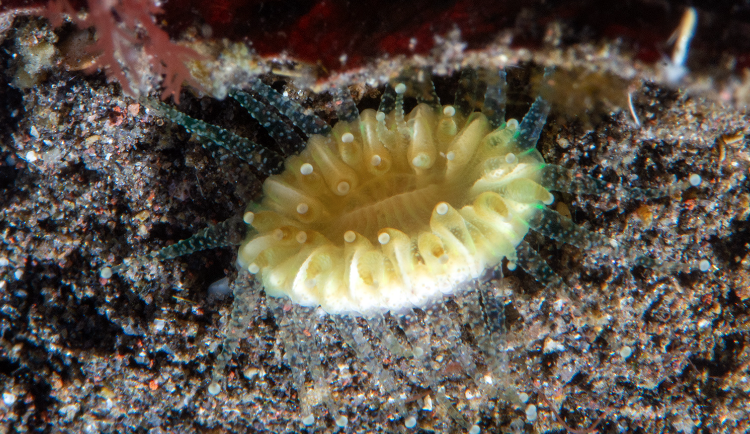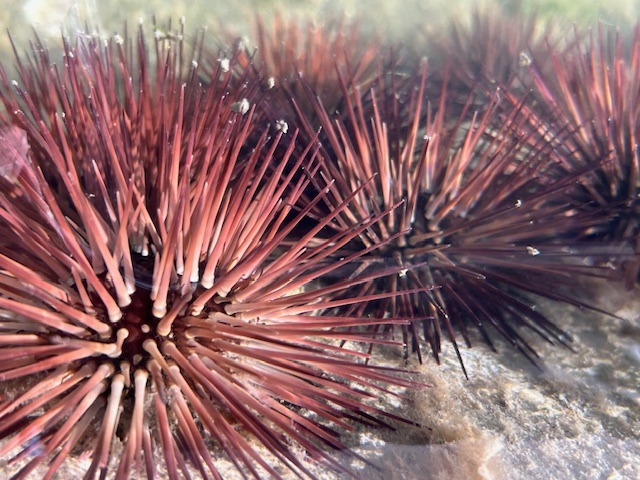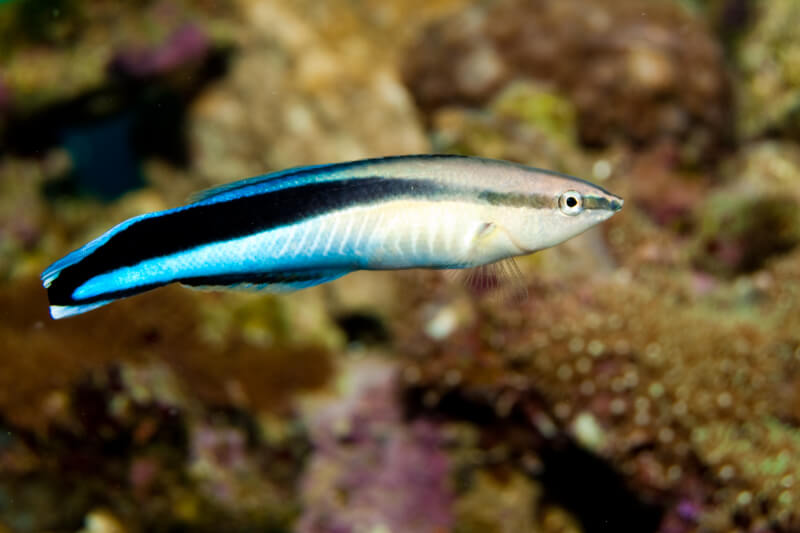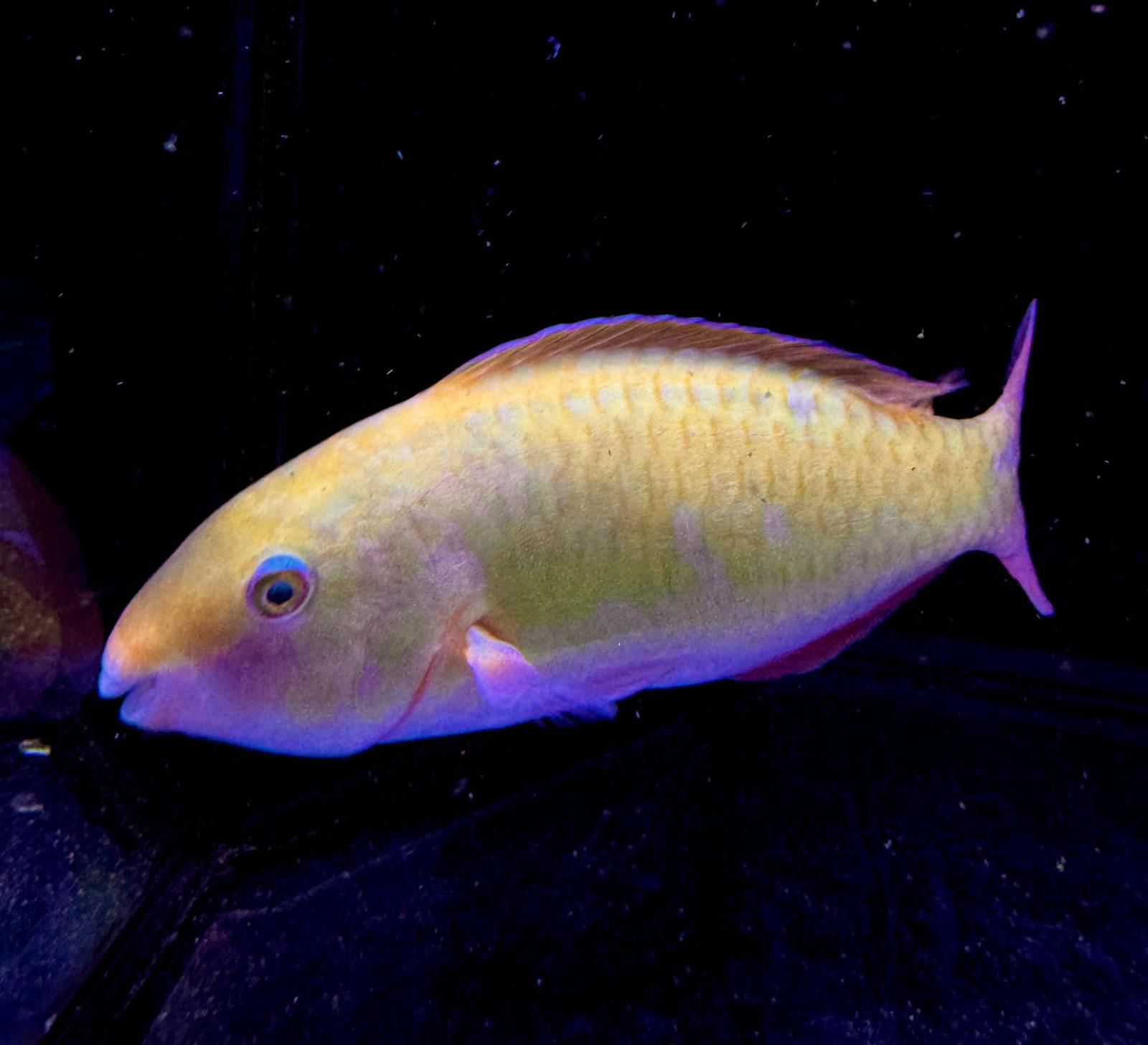Cup corals are a fascinating group, but one that is almost never available in the aquarium trade. If you’ve ever encountered this common name before, it was likely misapplied to one of the regularly available dendrophylliids, like Tubastraea, Turbinaria, and Duncanopsammia, but none of these really exemplify the idea of a cup-shaped coral.
Rather, the true cup corals belong to the Caryophylliidae, a diverse family found worldwide, with upwards of 44 genera and 300+ species, occurring in all manner of habitats, from the tropics to the poles, and from the intertidal to the bottom of the ocean. While there are a few zooxanthellate species, the vast majority of these little-known corals live in complete darkness, either in caves or down in the abyss, with only a handful making their way into the shallow coastal habitats of the Indo-Pacific.
The most frequently encountered of the tropical caryophylliids is Paracyathus, a white cup-shaped coral that usually has darkly stained septa, visible through its translucent tissue. You’ll often see these on muddy, rocky shores or amongst biofouling communities, sometimes in dense numbers (and, on rare occasion, specimens may sneak into aquarium exports as hitchhikers).
Inside caves and overhangs, you can sometimes find smaller, gregarious forms like Thalamophyllia or Tethocyathus. In deeper sand flats, there is Heterocyathus, a genus of free-living corals that has convergently evolved the same symbiosis as the Walking Coral Heteropsammia; both are zooxanthellate and live with a sipunculan worm, though unlike Heteropsammia, Heterocyathus doesn’t seem to ever make its way into aquariums, which is a bit odd given that these corals often occur together in the same habitats.
There’s even a colonial caryophylliid, Polycyathus, that occurs in silty coastal habitats. In the turbid waters near Mumbai, P. verrilli is one of the few stony corals that manages to survive in this challenging ecosystem, forming modestly sized colonies that encrust the rocky shoreline. It is photosynthetic and often comes in a beautiful fluorescent green color morph, making this one of the most suitable and desirable of the caryophylliids for aquarists, though one that is entirely unavailable. Sad.
The rarest of the Indo-Pacific cup corals is Trochocyathus. The genus is diverse, with 30+ species, most of which are known from depths below conventional scuba diving, thus making in situ photographs incredibly uncommon. In fact, I have only ever seen 2 specimens photographed. T. burchae is an attractive orange-ringed species described from Hawaii at 60 meters, but later reported from the Indo-Philippines. It generally resembles Balanophyllia, though the large acrospheres at the tip of the tentacles help to distinguish it.
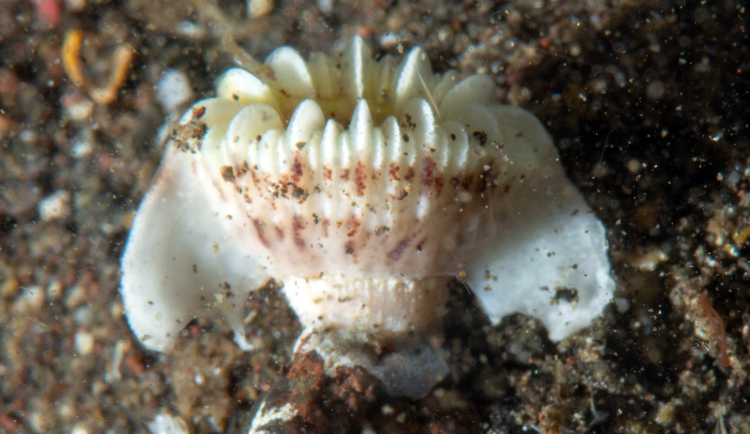
The photos shown here of T. cooperi are likely the first in situ images of this species and come courtesy of underwater photographer and author extraordinaire Andrey Ryanskiy. The species identification was provided courtesy of Stephen Cairns and Marcelo Kitahara, two of the leading experts in azooxanthellate stony corals, though it’s a bit provisional in light of the fact that the skeleton of this specimen was unavailable for study.
Trochocyathus species are delimited based on a variety of subtle skeletal traits, such as the relative shape and angle of the “cup”, the size of its septa, the presence of any dark markings, and development of thecal spines, used for anchoring the polyp in soft sediments. One of the more remarkable species in this group is T. longispina, a flat, disc-shaped species with several enormous lateral spines, nearly identical in appearance to the distantly related Stephanocyathus, both of which occur in deep, silty environs.
But while most Trochocyathus occur well outside the reach of recreational divers, this specimen of T. cooperi was observed in the afternoon at just 24 meters in Bali, one of the most heavily dived islands of the Indo-Pacific. It was found partially buried in a dark sandy sediment, alongside an equally impressive Balanophyllia. Bali’s resident coral guru, Vincent Chalias, reports that he has yet to encounter it in his many years of diving, illustrating just how rare (or at least rarely encountered) this little cup coral is in the wild.
However, T. cooperi is actually thought to be widespread in the Indo-Pacific, occurring as far east as the Marquesas Islands at the edge of Polynesia and north into the Ryukyu Islands of Japan. It was first described in 1904 from the Maldives, based on a pair of specimens collected at 60+ meters (see: figure 30), and is named for the British zoologist Clive Forster-Cooper (1880–1947), a participant during this pioneering study of Indian Ocean reeflife; the Red-bar Anthias (Pseudanthias cooperi) was also collected during this trip and named in his honor.
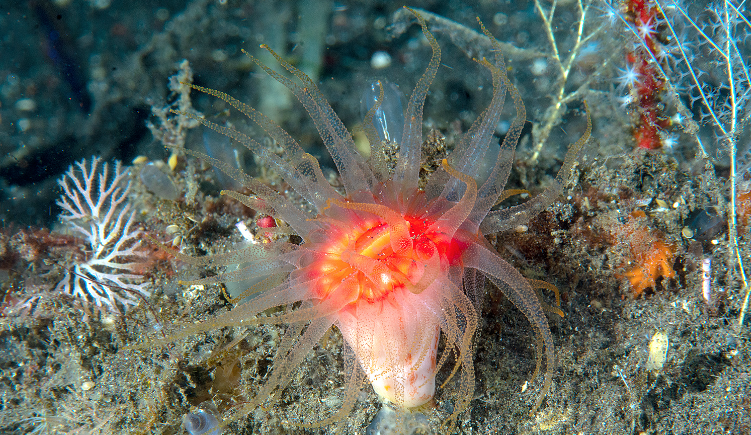
One peculiarity of Trochocyathus that might not be immediately apparent when looking at it buried in the sand is that these polyps can be both attached and free-living. Juvenile polyps begin life by encrusting upon whatever hard substrates they find—shells, gravel, or sometimes even other stony corals—but these eventually detach themselves to live free in the sediment. To extricate themselves from their attachment, Trochocyathus undergoes transverse fission, breaking itself in half along a horizontal fissure, similar to the asexual budding of certain fungiids.
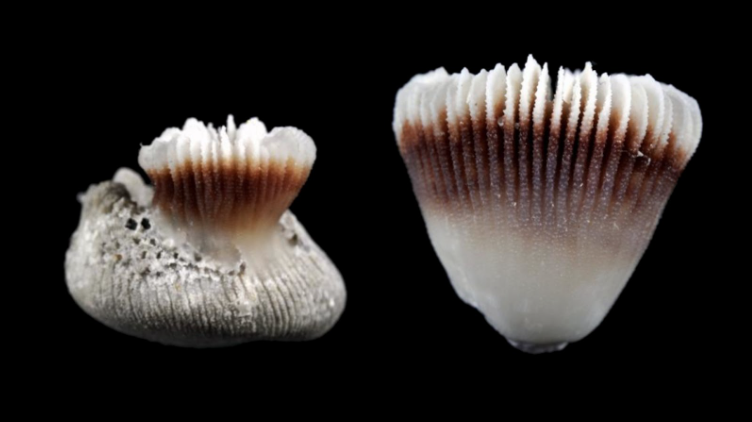
Now that we’ve gotten ourselves acquainted with the tropical caryophylliids, it’s time to address the elephant in the room: none of these corals are actually caryophylliids.
*audible gasp*
In recent years, a series of molecular studies have come out, revealing that the caryophylliids are an unnatural grouping. Amongst these “cup corals” are several evolutionarily distinct family-level lineages that just happen to share a superficially similar body plan. The true caryophylliids are a mostly deepwater family and can be diagnosed by a unique transposition within their mitochondrial genome; the physical location of certain genes has shifted around relative to each other (Seiblitz et al 2022), an extremely rare phenomenon amongst the stony corals.
None of the corals that we’ve reviewed here share this particular transposition, thus none of these corals are thought to belong to that family; rather, it’s likely that these shallow-water, tropical genera represent several distinct families (Randolph Quek et al 2023), though genetic data is still quite sparse, making it difficult to figure out where these various cup corals fit in the grander evolutionary scheme of things. Trochocyathus currently seems to represent a family all its own, but that may simply be an artifact of how little data there is as of yet.
It’s remarkable just how little we know about this mysterious coral. Why are you so rare, Trochocyathus?
